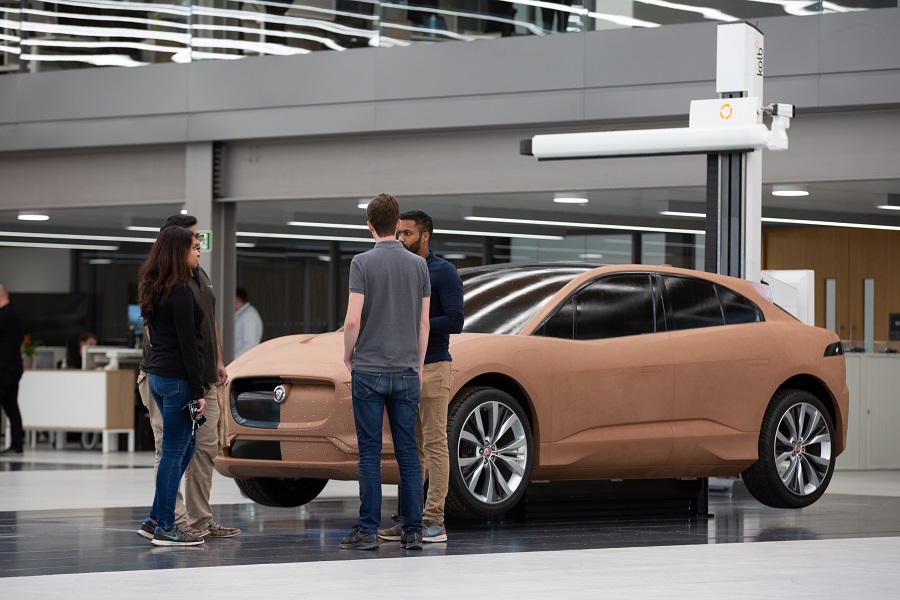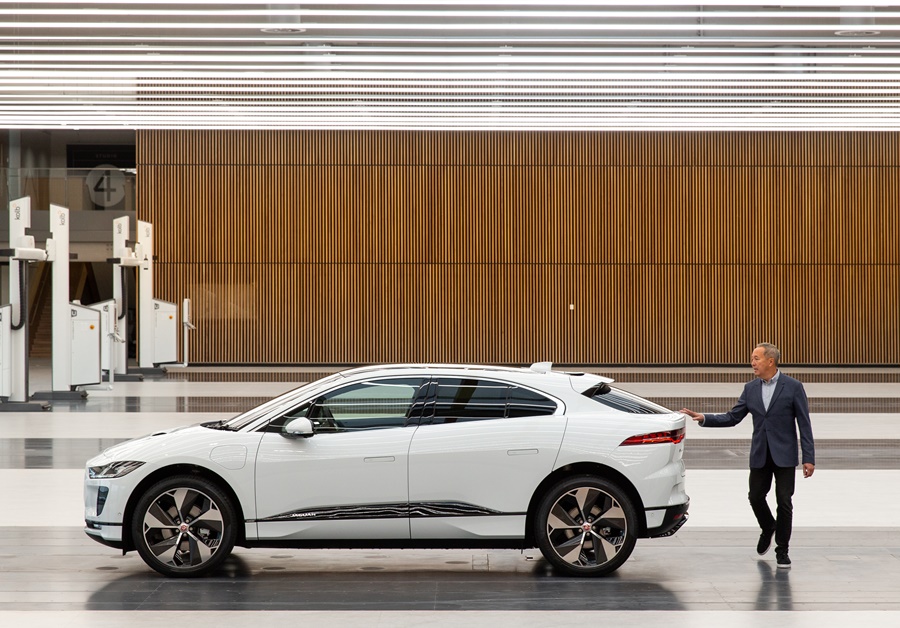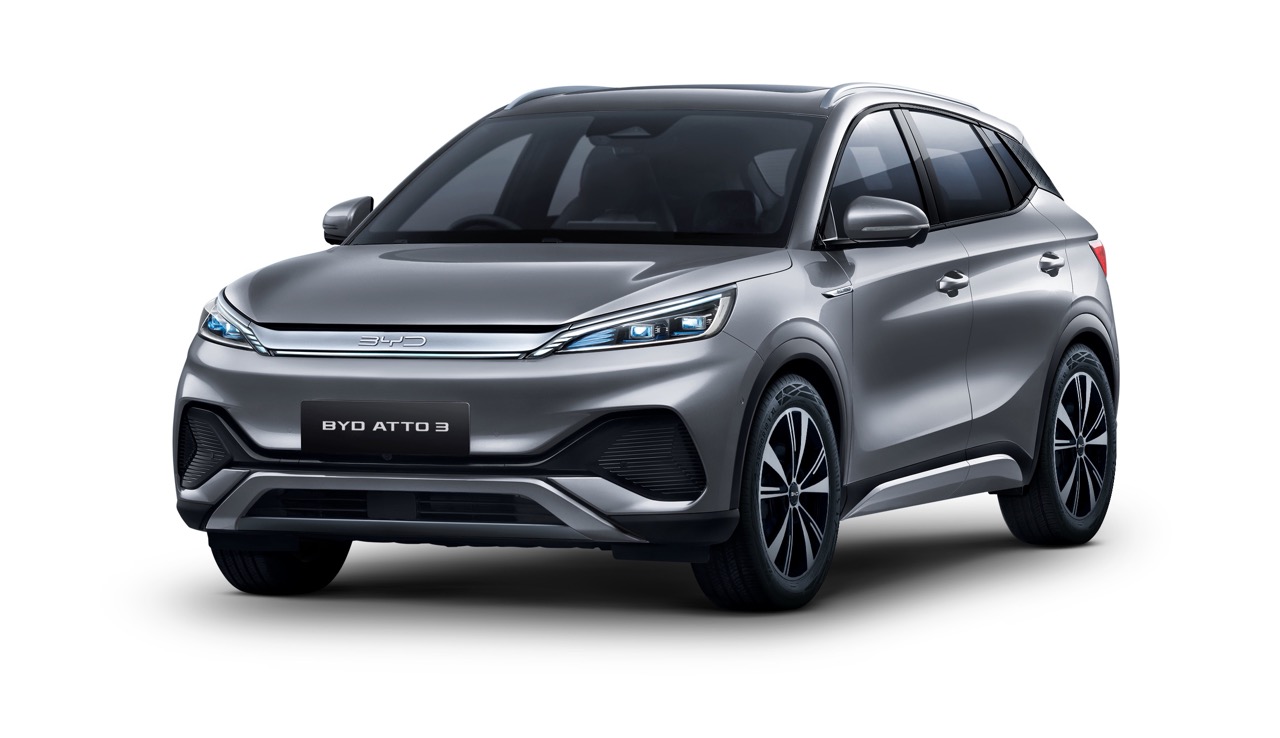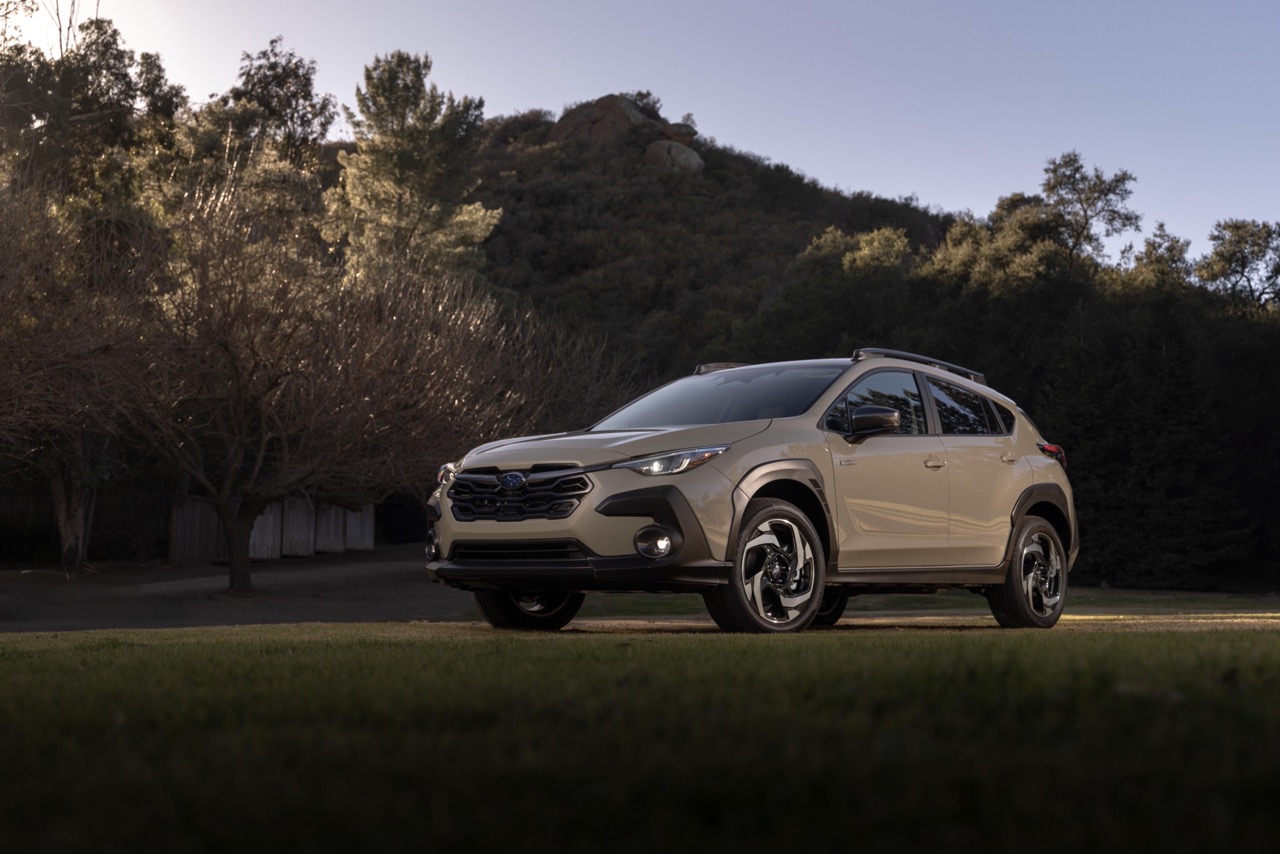The new Jaguar Design Studio at the company’s redeveloped Design and Engineering Centre in the UK lay claim to being the most technologically advanced design studio in the world. Built around a ‘Heart Space’, it puts people at the centre of the design journey, supporting a seamless workflow between creative and engineering teams.
How Jaguar achieves its design leadership has always been a closely guarded secret with work happening behind closed doors. But with Jaguar Design moving into this new purpose-built studio, a unique insight has been into the entire process of creating new models.
Across 6 stages of the design journey, the Exterior and Interior teams collaborate throughout a well-defined process that can move from inspirational first sketch to finished car in around 4 years. From start to finish, each project is overseen by a programme management team that ensures integration with all business functions at each of the 6 stages: Sketching – Clay Sculpting – Digitalisation – Colour and Materials – Design Technical – Model Manufacture.
Sketching done typically 4 years before reveal
Jaguar designers never stop sketching. Pen, pencil or tablet, the studio team is constantly generating new interior and exterior ideas for future products. Hundreds of sketches are produced each day. The design process for a future Jaguar starts with an internal competition. Designers – from across the studio – are tasked with producing their best sketches and creative ideas before entries are gradually whittled down through shortlist reviews.
On each project, up to 8 exterior key sketches will be taken through to the next stage, each demonstrating a different theme and approach to convey their own unique blend of Jaguar creativity and innovation. Computer-Aided Surfacing (CAS) specialists then create a digital version of the initial renders. This data is then used to accurately mill the clay models.
In the new Jaguar Design Studio, the teams can go from a sketch to a full-size clay model in only 2 weeks. Moving quickly into a physical 3-dimensional model is very important, because Jaguar Design has always had proportion and sculpture at its heart.
The designers who sketch the ‘winning’ initial ideas stay with the project from the first sketch to the production car, ensuring the creative spark behind the original vision is maintained and refined throughout the process.
During the sketching stage, one design is selected as the ‘vision’ which is used by the design and engineering teams to outline the feasibility of the proposal, its planned dimensions, aerodynamic requirements and any regulatory conditions. These constraints are then fed back to the other design disciplines to help progress the ‘vision’.
Clay sculpting
Clay sculpting is the lifeblood of the design studio with the sketches and engineering data turned into physical assets at this stage. An expert team of 46 sculptors, ranging from long-term employees to new talent coming through apprenticeships, add the human touch – quite literally – to bring the sketches to life.
The 6 to 8 projects that have been brought forward from the sketching phase, including the ‘vision’ proposal, have clay models created. Each of the designers is given half of a full-size exterior and is paired up with a clay team to bring their vision to reality. One sculptor will focus on the front, two on the side and another on the rear, though all sculptors are capable of working on any aspect of an exterior design. Following review, three different themes will be continued into a full clay with one final design signed off for further refinements to be made. Alongside the exterior models, individual parts like seats and steering wheels, and even full-size interiors, are also sculpted from clay.
Each full-scale clay model comprises an aluminium chassis, foam core and, finally, up to 90 mm of clay. The only part that is ‘real’ at this stage are the wheels. The clay is milled by machine using data from the CAS team before being ‘slicked’ and refined by the clay sculptors – this process can take as little as 2 weeks. Using carbonfibre and sprung steel splines, the tools used to precisely shape the clay, the team handcraft each clay to perfect their designs.
As designs are perfected, the clay models can be wrapped and painted to bring them to life. Jaguar Design utilises Virtual Reality to stitch a real-life 3D clay interior model into a digital world so designers and ergonomics experts can experience the look and feel simultaneously. On both exterior and interior clays, 3D rapid printed parts can be produced to help bring some of the beautiful details to life quickly and at an early stage.
Digitalisation throughout the design process
Digitalisation plays a pivotal role in Jaguar Design, and is integrated to every stage of the process from sketching through to launch animations. From the early conceptual stage, the Computer-Aided Surfacing (CAS) team convert the design sketches into digital 3D models, gradually evolving the designs as engineering and packaging data is released by the Design Technical team. This data is then used to create the clay models with real world refinements then scanned back into the CAS team for further mathematical adjustments. The CAS team then exports the surface data ready for the model to go into production.
The Jaguar Design Studio also has an in-house Design Visualisation and Animation (DVA) team, made up of experts from the world of television, film, advertising and gaming. These specialists work closely with designers and data teams to animate the 3D models into immersive films that help bring the design concepts to life in real-world environments.
Colour and materials
The car design process extends beyond exterior and interior appearance, with tactility of materials vital to Jaguar Design. Sitting between the Interior and Exterior studio is the Colour and Materials team – a position that reflects its significance to both disciplines. Its role is focused on developing innovative new interior and exterior materials and finishes and is made up of experts from the world of automotive, fashion, jewellery and product design.
The team is involved throughout the design process – from sketching all the way to engineering –and continuously works to innovate and bring new, exciting and relevant design solutions into future vehicles. They touch every customer-facing surface to deliver a true Jaguar user experience.
At the heart of its work sits Jaguar’s interpretation of ‘Britishness’ – an overwhelmingly positive and differentiating brand attribute – with the Colour and Materials team constantly evolving how this is woven into new vehicles. Individual members of the team hail from countries such as Sweden, Latvia, France and Italy, helping Jaguar to communicate what contemporary ‘Britishness’ means to customers across the world. ‘Britishness’ is a dynamic concept and Jaguar Design embraces the innovative elegance and merging of past and future crafts and technologies to give its vehicles their unique character.
Design technical
Design Technical looks at creative ways to deliver the team’s vision by developing design-enabling technologies and solutions from the very beginning of the process. This group of creative engineers sits at the centre of the design function to support the entire studio – helping to make even the most ambitious design a production reality.
The Advanced Design Technical (ADT) team work on whole vehicle layouts and architecture planning and form a key part of any project from the very outset. Their job is to make sure the designs are feasible, identifying physical and legislative challenges and finding creative solutions to them with the aim of making the transition from sketchpad to production a smooth one.
With the entire design function under one roof, within the same facility as the wider engineering team, the new studio is making the development process more fluid and organic at every step.
Model manufacture
Jaguar Design doesn’t just rely on clay sculpting to develop its vehicles; other full-scale models are created by the studio throughout the process. These interior and exterior models are used to evaluate size and proportion and are developed from initial concept sketches in the first six to 12 months.
The final model is the incredibly detailed Customer Design Reference Model – a full inside/outside driveable (low-speed) model created ahead of launch to showcase the vehicle before a full production version is available. It is built on a bespoke chassis with a body structure made up of a mix of carbon fibre and glass fibre, with fully functioning lamps, one-off machined aluminium wheels, and a fully trimmed interior complete with functioning displays.
“Jaguar has a unique heritage as a design-led brand and this will always to be a central pillar of our DNA. The new facility brings the entire design team together in one hugely creative space. We truly believe that inspiration comes from interaction and collaboration. Our studio is fitted with the latest technologies but, just as important, is the diversity of human expertise and our passion for Jaguar which helps us design the extraordinary,” said Julian Thomson, Jaguar’s Design Director.
Click here for other news and articles about Jaguar in PISTON.MY
































